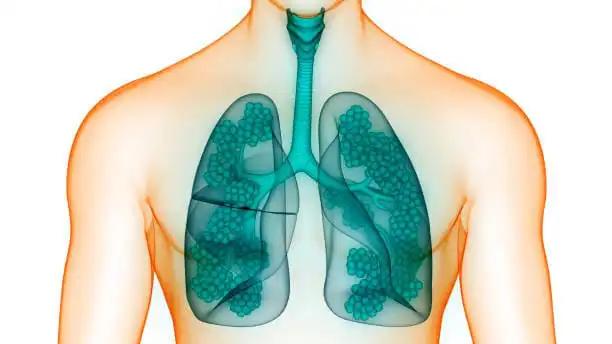KEY TAKEAWAYS
- CT555 phase III (NCT03850444) provides a 4-year report of KEYNOTE-042 from which the patients were analyzed for OS after receiving either Pembro or chemo.
- The study compared OSl of pembro and chemotherapy.
- Researchers utilized a randomized, open-label study in which 262 patients were split into two equal groups of pembro and chemo, respectively.
- Results showed prolonged OS with pembro compared to chemotherapy.
- TRAEs were also observed among the participants in this study.
Patients with untreated advanced/metastatic NSCLC with PD-L1 TPS 1% and no EGFR/ALK changes participated in the worldwide phase 3 KEYNOTE-042 research, which found that pembrolizumab (pembro) significantly prolonged OS compared to chemotherapy (chemo). Those with PD-L1 TPS 50% (0.63; 0.43-0.94), TPS 20% (0.66; 0.47-0.92), and TPS 1% (HR; 95% CI) had longer OS with pembro compared to chemo. These patients were enrolled in China (0.67; 0.50-0.89). After an additional 14 calendar months of observation, we report on the effectiveness and safety findings of KEYNOTE-042 in Chinese patients.
Patients enrolled in the KEYNOTE-042 (NCT02220894), globally and China extension (NCT03850444) investigations in China were randomly assigned to receive either pembro 200 mg Q3W for 35 cycles of treatment, carboplatin+paclitaxel, or pemetrexed, with pemetrexed maintenance treatment as an additional option (nonsquamous only). Patients with PD-L1 TPS 50%, 20%, and 1% were the primary focus for overall survival analysis. Patients who were eligible and had completed 35 cycles of pembro were offered a second treatment of pembro. The China expansion analysis was not allocated alpha.
In China, 262 patients with PD-L1 TPS 1% were split evenly between pembro (n = 128) and chemo (n = 134). The median duration between randomization and the end of data collection (April 28, 2021) was 47.2 (range, 39.8-56.1) months. Patients with a PD-L1 TPS of 50% or less (HR, 95% CI: 0.66, 0.45-0.95), 20% or less (HR, 0.68, 0.49-0.93), or 1% or less (HR, 0.95) had a longer OS with Pembro compared to chemo (0.67, 0.51-0.89; Table). Treatment-related grade 3-5 AEs occurred in 19.5% and 68.8% of patients receiving pembro and chemotherapy, respectively. Outcome-free survival (OS) estimates ranged from 59.7% to 69.1% after four years of randomization among the 22 patients who completed 35 cycles of pembro. At the time of the data cutoff, 79 patients in each group had started further treatment, with four patients beginning a second round of pembro.
First-line pembro in China for patients with advanced/metastatic PD-L1-positive NSCLC without EGFR/ALK changes continues to improve OS and produce durable response after nearly four years of follow-up, similar to the global KEYNOTE-042 research. Treatment of these patients typically entails Pembro monotherapy.
Source: https://www.abstractsonline.com/pp8/#!/10517/presentation/20294
Clinical trial: https://clinicaltrials.gov/ct2/show/NCT03850444
Wu, Y., Fan, Y., Zhou, J., Zhang, L., Zhou, Q., Li, W., Hu, C., Chen, G., Zhang, X., Zhou, C., Arenas, C. G., Fu, W., Wu, H., & Mok, T. (2022b). Abstract CT555: Pembrolizumab vs. chemotherapy in Chinese patients with PD-L1-positive NSCLC: 4-year update from KEYNOTE-042 China study. Cancer Research, 82(12_Supplement), CT555. https://doi.org/10.1158/1538-7445.am2022-ct555



